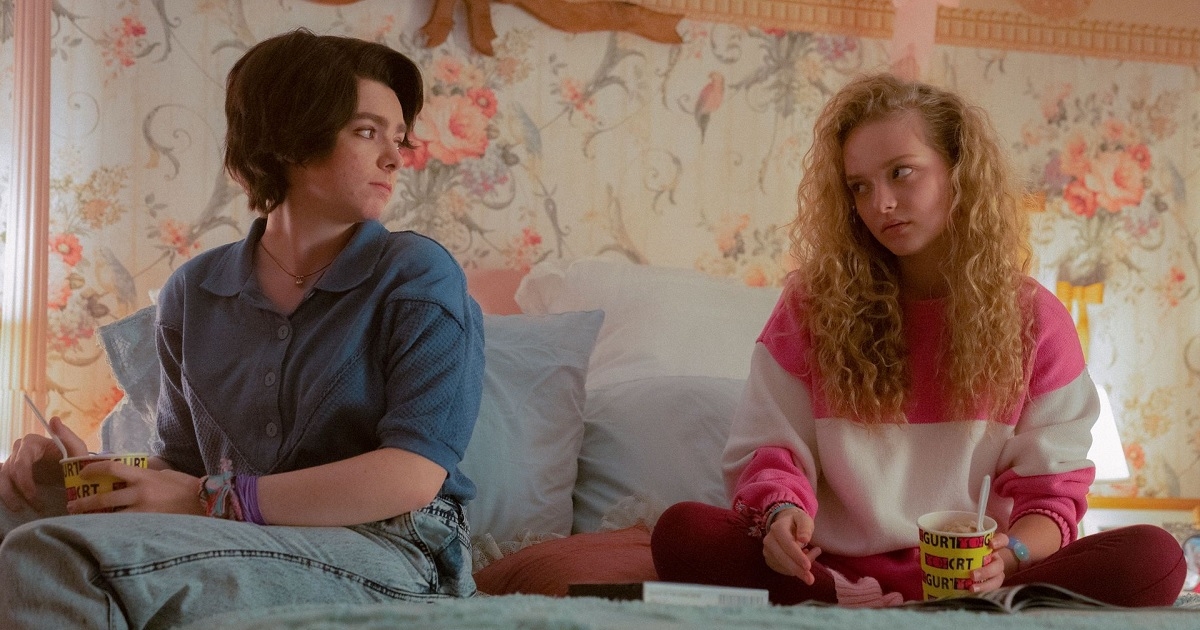When COVID-19 devastated the livelihoods of hundreds of Dane County entertainers in the spring of 2020 by forcing the cancellation of all live appearances, Mark Fraire knew he had to stop the bleeding. The director of the Dane County Arts and Cultural Affairs Commission (better known simply as Dane Arts) secured $15,000 in private funding and began offering $250 to artists who applied to help boost their online presence.
As more money became available from public and private sources, Dane Arts increased the grant to $500, eventually helping 250 independent artists in Dane County throughout 2020. Then in April 2021, thanks in much to Fraire’s tireless loyalty to the local arts. community, Dane County Executive Joe Parisi and the Dane County Board of Supervisors have allocated $1 million to Dane Arts to distribute to artists in the form of Dane Arts Need Grants (DANG).
“I wanted to call it the DAMN grant, Dane Arts Materials Need, but the county said, ‘We don’t like that,’” Fraire says with a laugh.
The message, however, was clear: “The arts are an integral part of the local economy and, in turn, will play an important role in our comeback and recovery,” Parisi said when the DANG program was announced.
“I’m really interested in how the arts are an economic engine for our communities,” says Fraire. “They generate funds that go right back into the local economy, and I want more businesses to understand that.”
A total of 400 artists, including writer, poet and storyteller Marisol González Rodríguez, Waunakee photographer Mark Weller, digital artist and muralist Lilada Gee, comedian Antoine McNeail and musician Josh Harty, each received $2,500. Some, like González Rodríguez, used the money for utility bills and computer repairs. Harty invested the grant dollars in new microphones and a new computer, allowing him to live stream and record at home during the pandemic.
“A lot of musicians play 20 or 24 nights a month,” says Harty, who still doesn’t play live as often as he did before the pandemic. “Restaurants depend on someone coming in to provide the entertainment. That routine is a great economic driver. I don’t think people realize how much art impacts them every day.”
Weller combined her grant money with that of another local artist to jointly purchase a trailer to transport her work to and from exhibitions. He also began participating in virtual exhibitions during the pandemic, which has allowed his work to be featured across the country.
“Artists run a business, and Dane Arts understands that,” says Weller, who also took several business-related classes the commission organized before the pandemic. “Dane Arts has been instrumental in helping me connect the dots.”
Connecting the dots has been Fraire’s mission since she became a leader of Dane Arts in 2014 after spending 17 years as a grant specialist for the Wisconsin Board of the Arts and a brief stint doing similar work for the Wisconsin Metropolitan School District. Madison.
Dane County is part of the Arts & Economic Prosperity Study conducted by the nonprofit Americans for the Arts approximately every five to seven years. The latest results, based on fiscal year 2015, came to this conclusion: “The nonprofit arts and culture sector is a significant industry in Dane County, generating $249.9 million in economic activity. total. This spending ($145.7 million by nonprofit arts and cultural organizations and an additional $104.2 million in event-related spending by their audiences) supports 9,154 full-time equivalent jobs, generates $183.6 million in household income for local residents and delivers $23.9 million in local resources and state government revenue.”
“We use this data to show the business community the value of what artists do for our community,” says Fraire. “Changes are being made through deliberate efforts.”
As examples of those deliberate efforts, he points to the more than 70 murals that now enliven the county, as well as the burgeoning cultural arts corridor on Madison’s East Washington Avenue, fueled in part by the collective presence of the Brink Lounge/High Noon complex. , Madison Youth Arts Center, The Sylvee, Dark Horse ArtBar, the Artists in Residence program at StartingBlock Madison, and a variety of cultural events at Breese Stevens Field.
Since 2019, Dane Arts has partnered with Forward Madison FC, the city’s professional soccer team, to offer a series of free posters, an example of what Fraire calls “spARTS,” the blending of sports and art. Each home game at Breese Stevens features a different poster created by a local artist, receiving pay and free entry to the game, as well as recognition on the scoreboard.
Promotion of the poster, which has helped raise the profile of both the artists and Forward Madison FC, grew out of a 2019 article in The New York Times about poster giveaways from the Portland Trailblazers of the National Basketball Association. “People would come to the game just to get the sign,” Fraire recalls. “Wow. What a great idea.”
González Rodríguez believes that her work as one of two new artists-in-residence at StartingBlock Madison this year (poet Araceli Esparza is the other; poet Sasha Debevec-McKenney’s term ends in July) has not only helped her better understand the writing business, but has also helped increase recognition for artists, especially artists of color. In the program, artists-in-residence have access to coworking space and resources, and StartingBlock members interact with artists.
“It’s definitely changed the dynamic,” he says of sharing space with several budding entrepreneurs. “People are a little more aware of what artists are doing now.”
That awareness must continue to grow. In May, Dane Arts awarded $95,400 in grants to 59 local artists, part of more than $180,000 in public-private funding the county plans to distribute this year to nonprofits, schools, individuals and municipalities for arts projects and programs. local culture and history. .
Fraire says his previous work as a comedian exposed him to the challenges of being an artist, but also helped prepare him for his role at Dane Arts. “Being a comedian requires the ability to interact with others,” he says. “It’s about networking, it’s about building a relationship with the audience, it’s about timing: knowing when to say something and when not to.”
The time has come for him to speak up. “The arts are embedded in everything we do, from sports to manufacturing to education to environmental issues to social services, and I think they are often misunderstood and marginalized. I’m trying to help people see, recognize and appreciate what so many artists do for all of us.”
What is a disadvantage of a grant?

Grants only offer a percentage of the cost of your project, usually between 10-30%, although some grants can go as high as 50%. You are responsible for obtaining the rest of the funds necessary to complete the project. Start-ups are often excluded from subsidies.
Why do grants fail? The most common reasons for proposal rejection boil down to a surprisingly small set of simple and familiar failures: The submission deadline was missed. The topic of the proposal was not appropriate for the funding agency to which it was submitted. This may interest you : Jess Burgess joins the Greenville Center for Creative Arts as new CEO. Guidelines for proposal content, format, and/or length were not followed exactly.
What are the disadvantages of government assistance?
Disadvantages. Government entities are generally more risk averse than private entities and therefore do not provide funds as a lump sum. They choose to reimburse expenses, which can be difficult for nonprofits due to the waiting period between payments and waiting for these reimbursements.
What is the disadvantages of social grants?
In reality, grants can often become a source of frustration and stress for a nonprofit organization. Grants can’t help you get started. This may interest you : Find a furry friend on Saturday at Pike Road, then learn to capture them in art. Grants come with many strings attached.
What are advantages and disadvantages of grants?
8 Advantages and Disadvantages of Business Grants On the same subject : Waterbury Arts Fest kicks off Friday night with a blockchain party.
- Advantages of business grants.
- Free money. The number one advantage of business grants is that they are essentially free money. …
- Accessible information. …
- Waterfall effect. …
- Earn credibility. …
- Cons of business subsidies.
- Waste of time. …
- Difficult to Receive.
What is the difference between a formula grant and a project grant?
What is the difference between a formula grant and a project grant? Formula grants are governed by demographic formulas in a given area. By contrast, project grants allow the national government greater discretion in deciding how much aid to award to a project.
How are formula and project grants different? Categorical formula project grants involve a two-stage grant distribution: first, a formula grant is used to distribute funds among states, and then project grants are awarded by state officials to state and local government agencies.
What is project grant?
In general, a project grant is awarded to support a set of specific and connected activities, with a beginning and end, explicit objectives, and a predetermined cost. When a funder makes a grant for a specific project, it is generally a restricted grant and must be used for that project.
What is a formula based grant?
Formula grants are funding programs that you do not compete for, although you must apply and meet other specific requirements. They guarantee that designated recipients will receive the funds, and are typically administered and administered by state administration agencies.
What is the most common grant?
Program/Project Grants This is the most common type of grant. Program/project grants specify that funds may only be used to support the program or project referenced in your proposal.
What are the two types of grants? Most grants made by foundations and corporate giving programs can be classified into one of two types:
- General purpose or operating support grants.
- Subsidies for the development of programs or support for projects.
What are the 3 main types of grants in aid?
Block grants, categorical grants, and general revenue sharing are three types of federal government grant programs.





